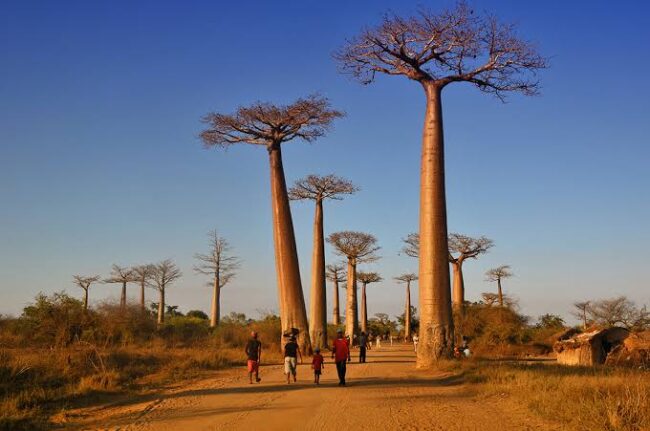In Kenya all Baobab trees are facing
some new threats on top of climate
change. some are now being uprooted and
exported. our next report looking at how
a number of farmers say they don’t see
the economic benefits of the tree ,and
these trees tend to take up space in
their crop fields
native to the African continent . The
Baobab tree is typically found in
sub-Saharan African countries
in Kenya . The Baobab Tree also known as
mbuyu is commonly found in dry areas. the
gigantic tree used to be important
culturally as a worshiping tree.
its leaves pulp and seeds were a source
of food and traditional medicine, but the
renowned trees are now dying.
scientists suspect climate change is
playing a role in their decline . in
research published in the journal Nature
in 2018 , they found that some of the
oldest and largest trees had died in the
last decade.
although scientists believe that Baobab
trees can also play a role in helping
mitigate climate change. if we look at
the composition of The Baobab Tree
itself, it is a tree that is able to
store large volumes of water. it is able
to survive in the different
environmental conditions ,and Baobab has
been by research has been identified as
the best tree that can be able to help
in comparing the effects of climate
change.
These trees are important for
biodiversity and can live for over 2 000
years.
those benefits often attract interest
from the rest of the world,
between May and November foreign
contractors started to uproot and
prepare many trees for export to a
Botanical Garden in Georgia. some
poverty-stricken Farmers agreed to sell
their trees for between 815 and
2450 dollars.
pictures of uprooted Baobab trees in the
coastal town of kilifi surfaced online.
prompting a public outcry ,it prompted
the Kenyan government to Halt the export
of the baobabs ,and stored an
investigation into how the contractor
was allowed to transport the trees under
the Nagoya protocol.
an international agreement that oversees
the conditions for the export of genetic
resources,
the deliberations that came from the cop
27 is that Nations need to come out with
a strategy ,that they improve their
Forest cover. it is worrying that
Africa Which is less emitting and
sequencing a lot of carbon . again they’re
coming to take the trees from us. you see
the story of Cliffy on the uprooting of
Baobab tree . this tree is being imported
to Georgia and we’re really worried.
for some Farmers The Baobab takes up
space in their crop fields and doesn’t
represent a source of income.
in the old days the Baba Tree was very
important culturally to us, this is not
the case nowadays. it also occupies too
much space in our small farms in which
we plant Maize and vegetables. that is
why we have chopped the trees down or
have planted our crops far away from
where the trees are.
more recently The Baobab tree fruit has
gained International traction as a
superfood. a trend that may encourage
Farmers to preserve their trees and sell
the fruits.
despite such qualities of these trees
under Kenyan law ,The Baobab tree is not
a protected tree species.
but permission is required to uproot
them.
so exporting and cutting down these
trees is still possible.

